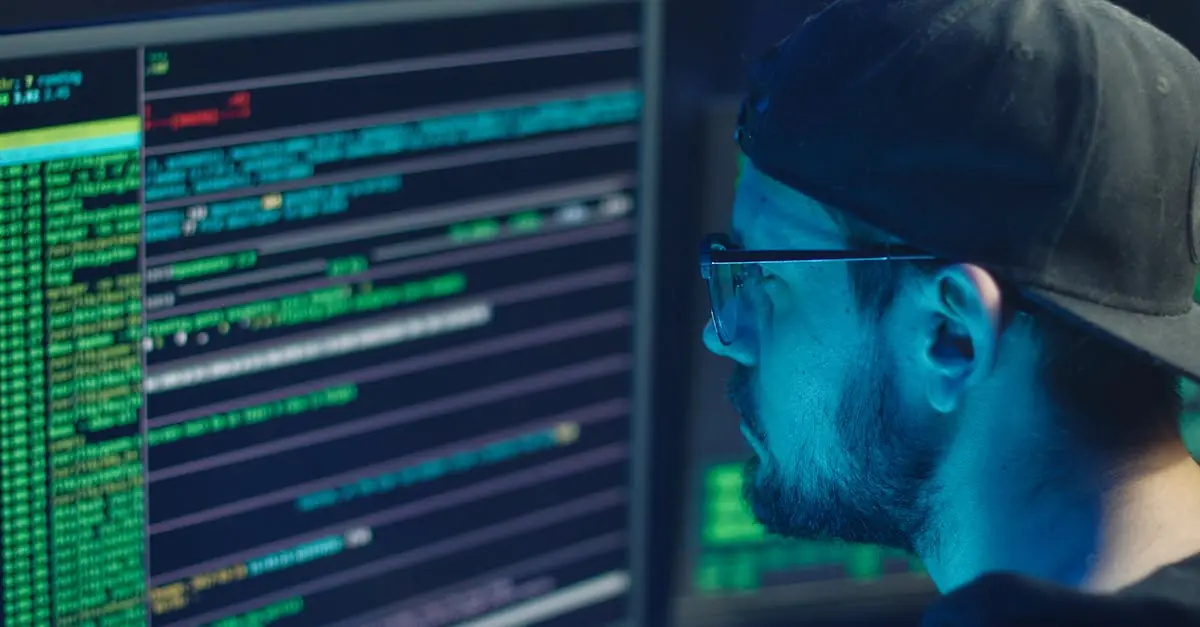In a world where scams lurk around every corner, the quest for safety has never been more crucial. Enter the superhero of the digital age: the blockchain secure QR code. It’s like a bouncer for your data, ensuring only the right folks get in while keeping the riffraff out. Say goodbye to the days of worrying about whether that QR code is a gateway to a treasure trove or a black hole of fraud.
Imagine whipping out your phone and scanning a code that not only opens doors but does so with the confidence of a seasoned bodyguard. With blockchain technology backing these QR codes, users can rest easy knowing their transactions are protected by an unbreakable chain of trust. It’s time to embrace this innovative fusion of convenience and security, because who wouldn’t want to be both tech-savvy and safe?
Table of Contents
ToggleWhat Is Blockchain Secure QR Code?
Blockchain secure QR codes represent a significant advancement in data protection. These codes integrate blockchain technology to enhance security for transactions and information access. Users find comfort in knowing that these QR codes assign unique identifiers linked to specific data, ensuring authenticity.
Each block within the blockchain retains a record of these identifiers, making alterations nearly impossible. Fraudulent activities become exceedingly difficult due to this immutable nature of the data. Transparency plays a crucial role, as participants can verify information without need for intermediaries.
Additionally, the process of generating these codes utilizes cryptographic techniques. Encryption mainly ensures that only authorized individuals can decipher the encoded data. Access control mechanisms accompany this encryption, allowing for granular permission settings.
Many businesses adopt blockchain secure QR codes to protect sensitive customer data. Examples include health records and financial transactions, where security is paramount. Retailers, for instance, implement these codes to authenticate product origins, combating counterfeit goods in the supply chain.
Convenience also benefits from this technology. Scanning a blockchain secure QR code facilitates quick and straightforward transactions, streamlining user experiences. Users appreciate the ability to access detailed product information and verify legitimacy effortlessly.
Blockchain secure QR codes combine innovation, security, and ease of use. They represent a powerful tool against fraud, protecting sensitive data while simplifying transactions for users.
How Blockchain Enhances QR Codes
Blockchain technology significantly improves QR codes by adding layers of security and trust to data interactions. Enhanced protection and accessibility match the security needs of users.
Improved Security Features
Blockchain secure QR codes incorporate advanced security features that deter unauthorized access. Each code contains unique cryptographic keys, making duplication or tampering nearly impossible. Authorized users gain access to essential data via access control mechanisms, ensuring that only selected individuals retrieve information. Fraud prevention becomes a primary focus due to the immutable nature of blockchains, which retains a permanent record of transactions. This security architecture empowers organizations to safeguard sensitive information effectively while providing users peace of mind during transactions.
Transparency and Traceability
Transparency and traceability remain critical advantages of using blockchain secure QR codes. These codes link to a distributed ledger, allowing users to verify the authenticity of data seamlessly. Users can track product origins and transaction histories, enhancing trust between consumers and businesses. Information stays accessible without intermediaries, simplifying the verification process. Retailers and customers alike benefit from this heightened visibility, which builds credibility and integrity around products and services. Enhanced traceability directly combats fraud by ensuring every transaction remains documented and accountable.
Applications of Blockchain Secure QR Codes
Blockchain secure QR codes have a wide range of applications across various industries, demonstrating their significance in enhancing security and efficiency.
Supply Chain Management
In supply chain management, blockchain secure QR codes enable real-time tracking of products from origin to delivery. These codes maintain transparency, allowing stakeholders to verify the authenticity of goods effortlessly. By linking each QR code to unique blockchain records, companies can monitor conditions during transit, ensuring quality is preserved. Supply chain partners gain access to accurate data, fostering trust and collaboration. Moreover, the ability to trace product history minimizes counterfeit risks significantly, aligning with brand integrity and consumer safety.
Digital Payments and Transactions
Digital payments benefit immensely from blockchain secure QR codes, providing a seamless transaction experience. These codes facilitate instant payments, enhancing convenience for both consumers and businesses. Each QR code generates unique cryptographic keys, ensuring robust protection against fraud. Users can scan codes to access secure payment links, confirming transaction authenticity in real-time. The integration of blockchain further assures permanent records of each transaction, enhancing accountability. In addition, these features promote user confidence, making digital payments more appealing to a broader audience.
Benefits of Using Blockchain Secure QR Codes
Blockchain secure QR codes offer enhanced data protection, ensuring that sensitive information remains accessible only to authorized users. Privacy remains a top priority, with cryptographic techniques securing data from unauthorized access. Additionally, the combination of unique identifiers and immutable records fosters authenticity, making alterations virtually impossible.
Organizations adopting these codes benefit from increased transparency. Users can verify data authenticity without relying on intermediaries, promoting trust in transactions. Many businesses leverage this feature to authenticate products and validate their origins, minimizing counterfeit risks in various industries.
In supply chains, real-time tracking is essential. Blockchain secure QR codes streamline this process, maintaining visibility from product origins to deliveries. Stakeholders can easily verify the legitimacy of goods, leading to stronger relationships and trust among partners.
Convenience is another significant advantage. Scanning these QR codes enables quick and seamless transactions in digital payments, enhancing user experiences. Each code generates distinct cryptographic keys, providing robust fraud protection and instilling confidence in consumers and businesses alike.
Enhanced accountability accompanies the use of blockchain secure QR codes. Permanent transaction records ensure that every interaction is documented, safeguarding sensitive information effectively. This feature contributes to a more reliable system where accountability is paramount.
Across various sectors, the versatility of these codes shines. Their applications extend beyond digital payments, impacting industries from healthcare to retail. The potential to protect sensitive customer data while ensuring ease of access makes blockchain secure QR codes a valuable innovation.
Challenges and Limitations
Blockchain secure QR codes face several challenges that may impact their adoption and effectiveness. One significant limitation lies in the complexity of integrating blockchain technology into existing systems. Many organizations lack the necessary infrastructure or expertise to implement these codes effectively.
Scalability also poses an issue. As the number of transactions increases, maintaining the speed and efficiency of blockchain operations can become challenging. Delays in processing transactions may frustrate users, leading to a negative experience.
Security concerns arise despite the enhanced encryption offered by blockchain. Cybercriminals continuously evolve their tactics, and no system is entirely immune to attacks. Organizations must invest in comprehensive security measures, risking additional costs and resource allocation.
User education remains critical. Many consumers may not fully understand how blockchain secure QR codes function or the benefits they provide. This knowledge gap can hinder widespread adoption, as users may hesitate to engage with unfamiliar technology.
Another challenge is the regulatory environment surrounding blockchain technology. Regulations vary by region, leading to compliance hurdles for businesses operating across borders. Navigating this complex landscape may discourage some organizations from adopting blockchain secure QR codes.
Limited compatibility with traditional QR code infrastructure presents additional barriers. Many businesses still rely on standard QR codes, creating a divide between the two systems. Lack of standardization may also complicate interoperability among different platforms.
Addressing these challenges requires ongoing collaboration among technology developers, businesses, and regulatory bodies. By overcoming these barriers, industries can fully leverage the potential of blockchain secure QR codes to enhance security and transaction efficiency.
Conclusion
Blockchain secure QR codes are revolutionizing data protection and transaction security. By leveraging blockchain technology, these codes provide a robust solution against fraud while ensuring user convenience. Their unique identifiers and cryptographic techniques create an environment where data access is strictly controlled and authenticated.
As industries increasingly adopt these innovative codes, the benefits of enhanced security and transparency become clear. They not only safeguard sensitive information but also streamline processes across various sectors. The potential for blockchain secure QR codes to reshape how businesses and consumers interact is immense, making them a critical tool in today’s digital landscape.




